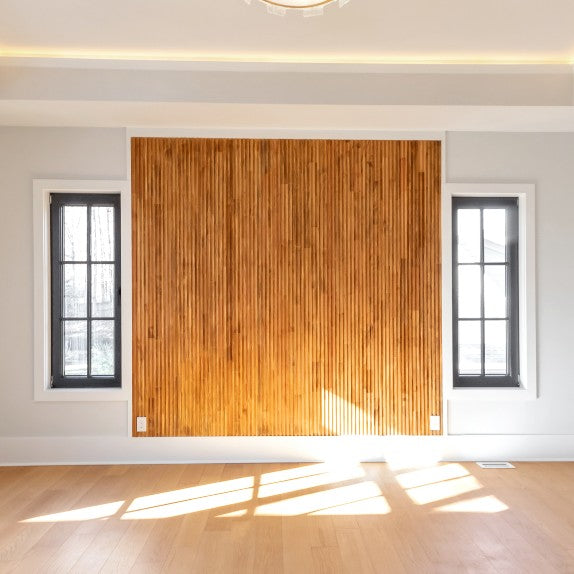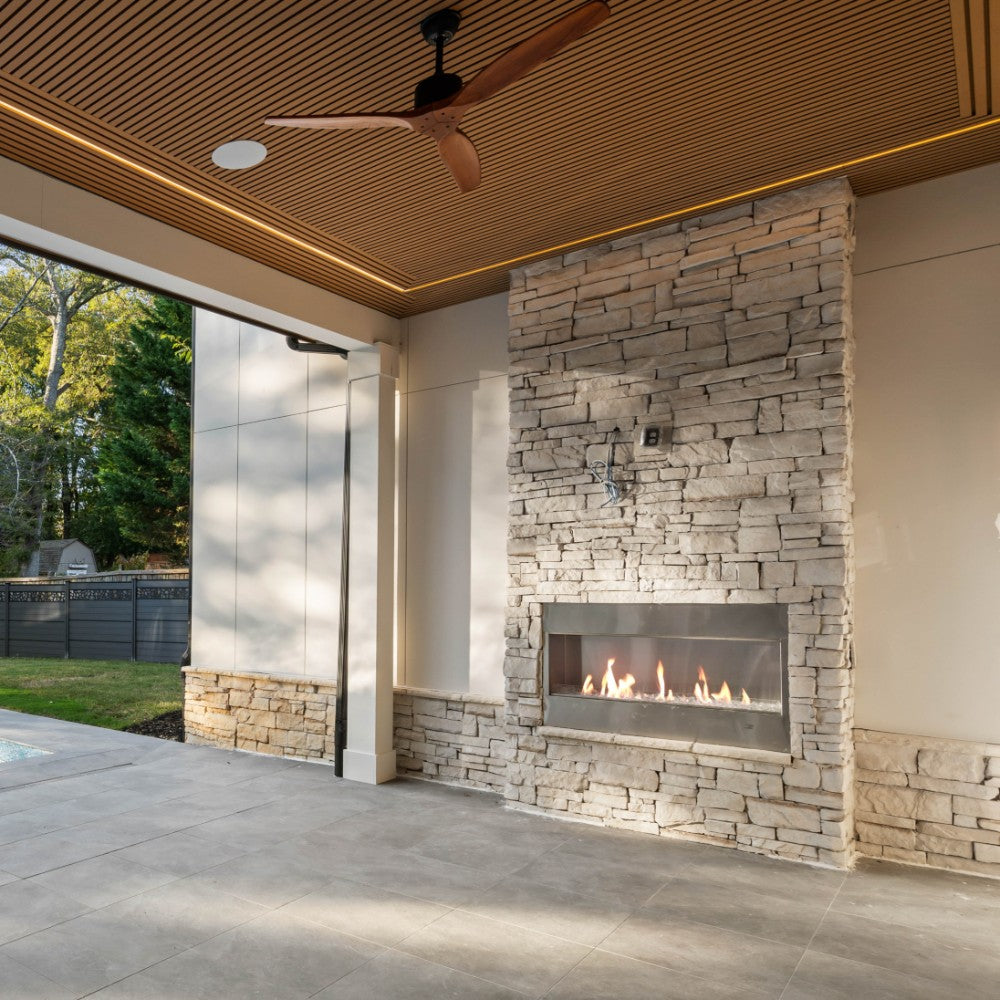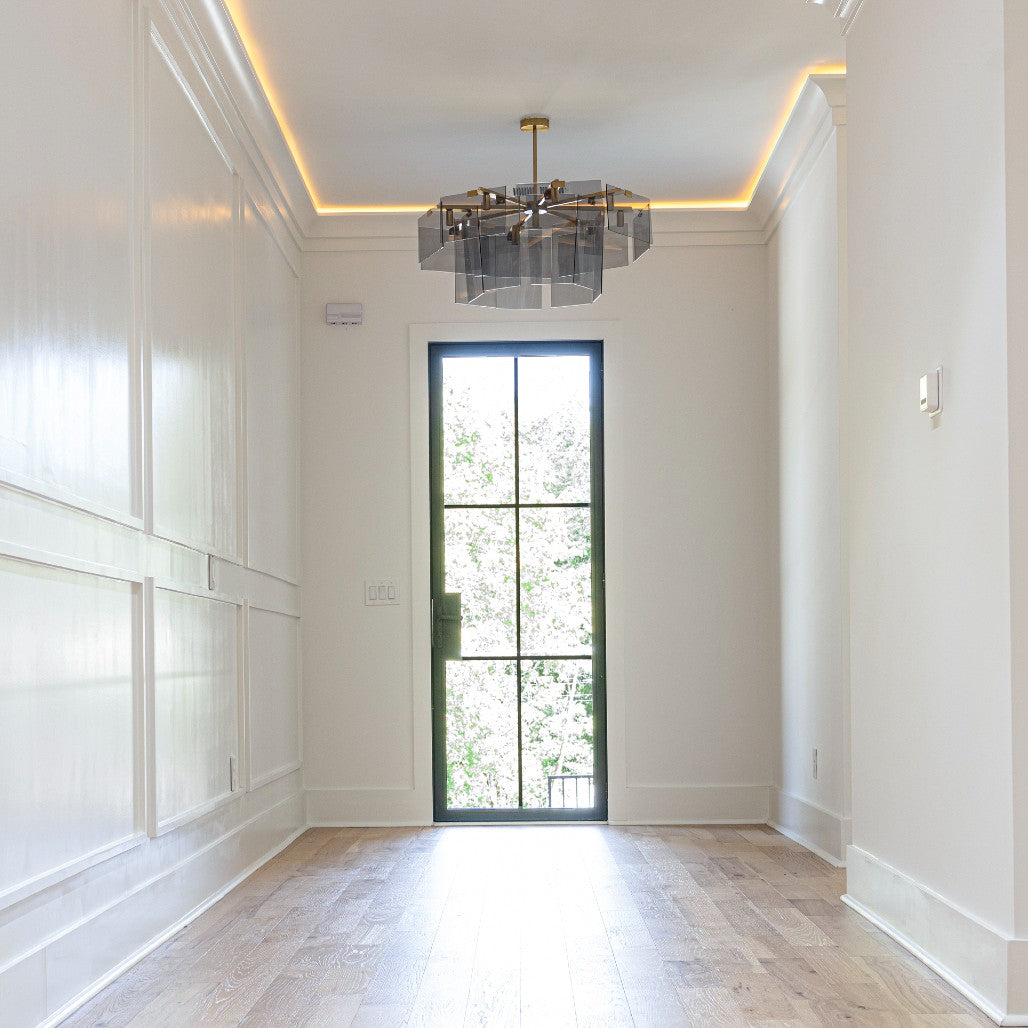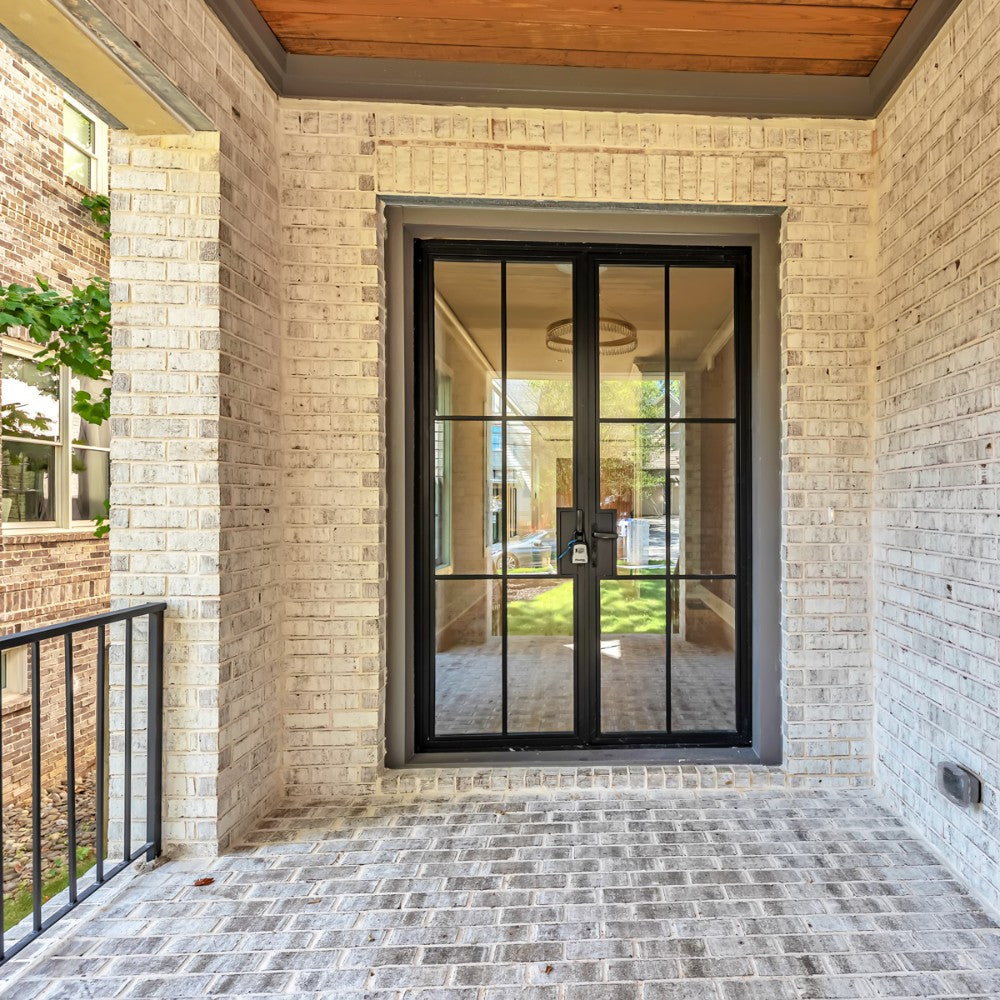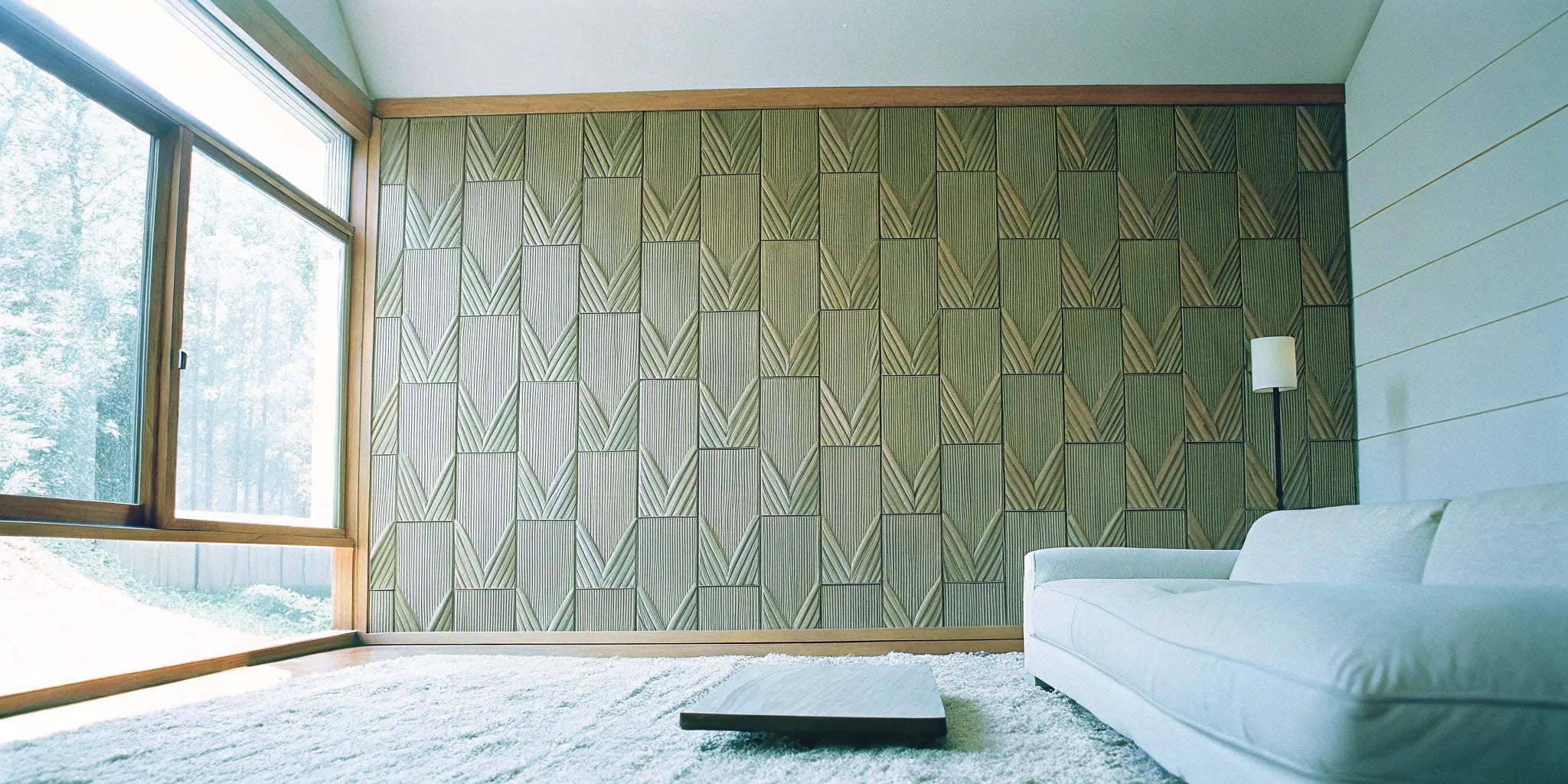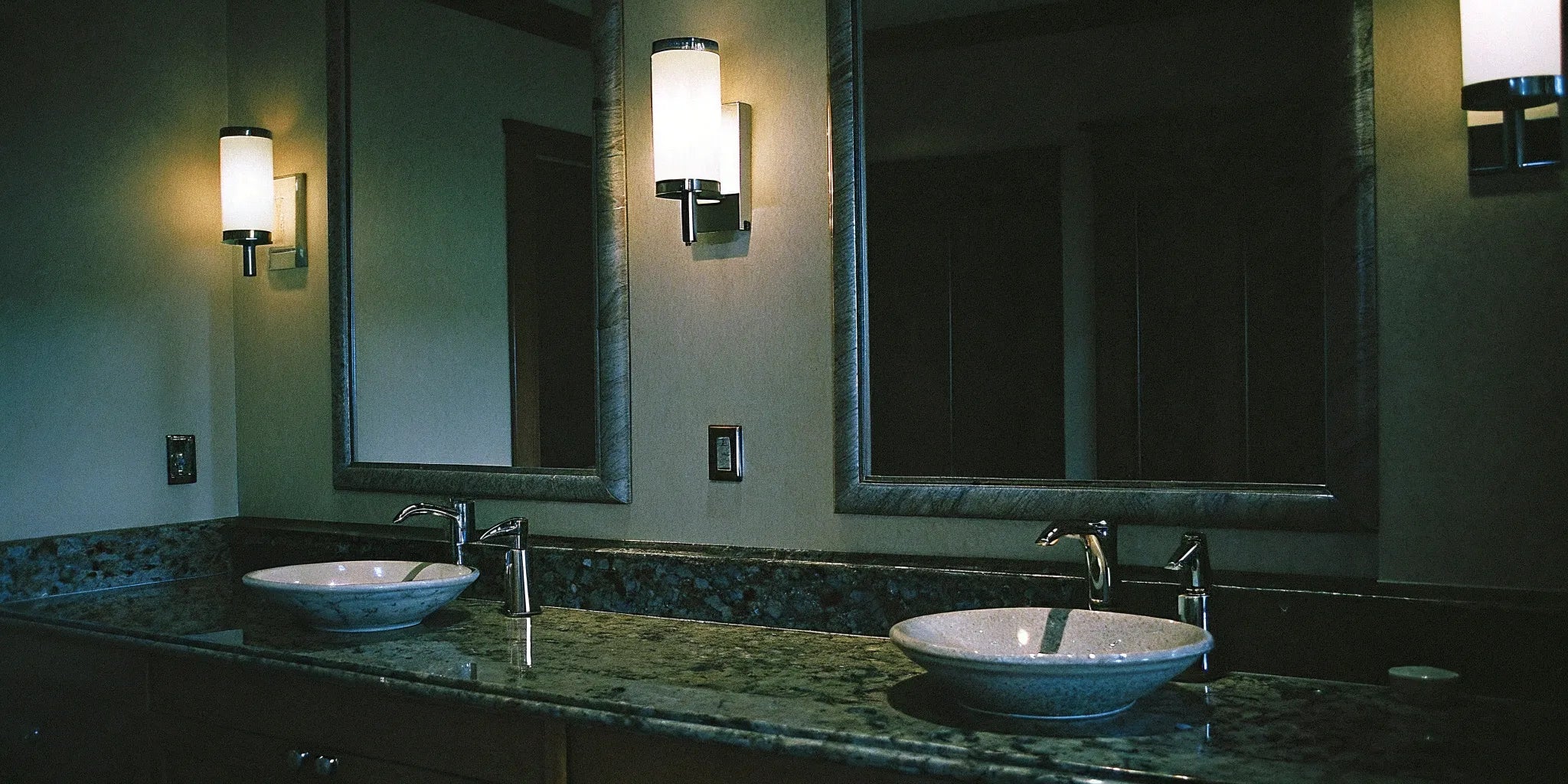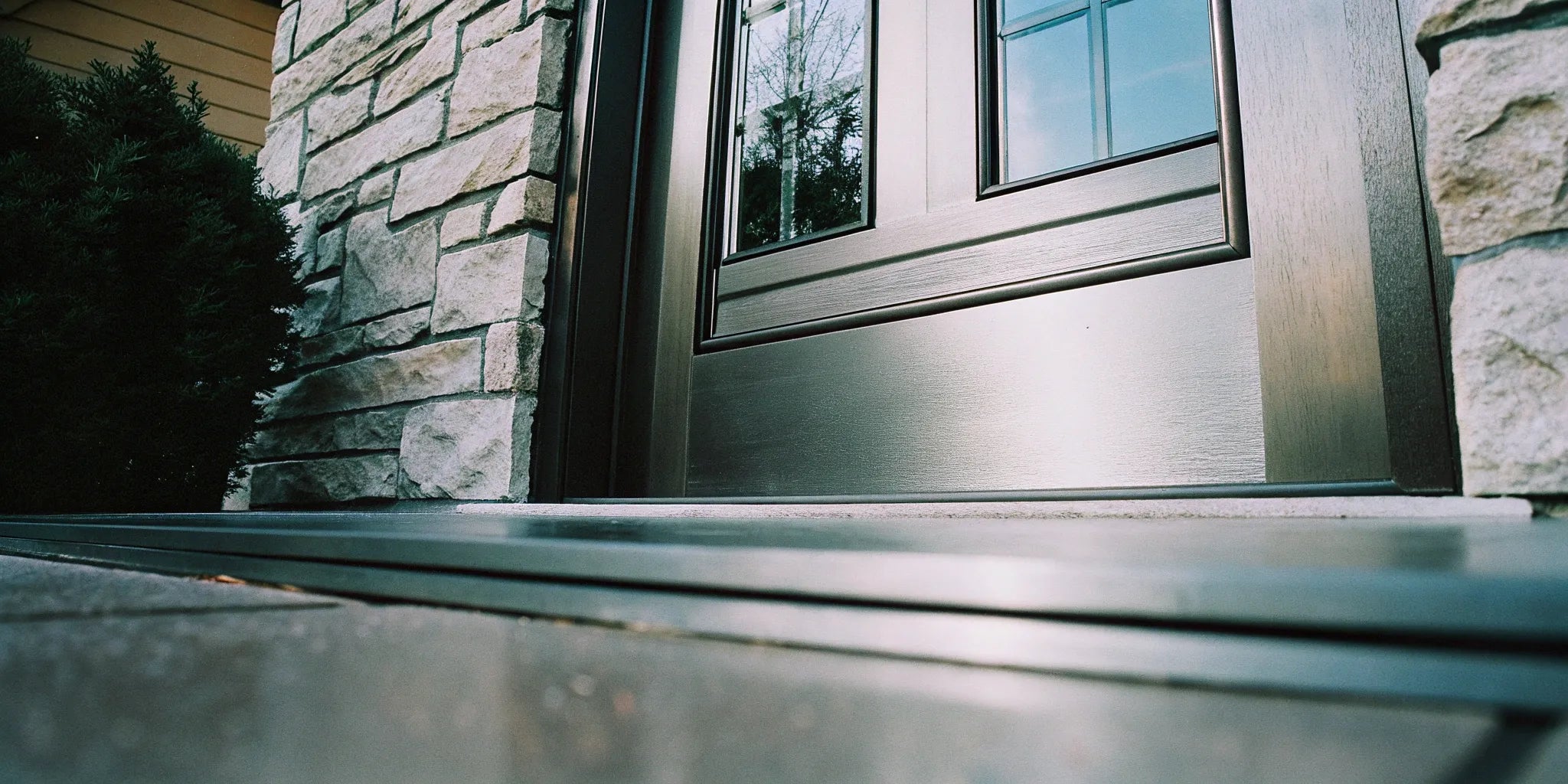
A Homeowner's Guide to Residential Steel Doors
Let's be real about steel doors. If you're picturing a cold, industrial slab of metal, it's time for an update. Today’s residential steel door is a style chameleon, perfectly mimicking the warm look of wood or fitting a sleek, modern aesthetic—without the maintenance headaches. But its beauty is more than skin deep. It delivers top-notch security, incredible durability against the elements, and energy efficiency that can actually lower your utility bills. This guide is here to show you what’s possible. We’ll break down the benefits and help you choose a stunning door that protects your home.
Key Takeaways
- Prioritize security and durability with a steel door: Steel provides a powerful defense against intruders and stands up to the elements without warping or rotting, making it a low-maintenance choice that protects your home for decades.
- Lower your energy bills with an insulated core: Look for a steel door with a foam-insulated core and quality weatherstripping. This creates a thermal barrier that keeps your home comfortable and leads to real savings on heating and cooling costs.
- A perfect installation is non-negotiable: A steel door's performance depends entirely on its installation. Hiring a professional ensures the frame is perfectly level and secure, which is critical for proper function, energy efficiency, and security.
Why Choose a Steel Door for Your Home?
When you think about making a big impact on your home's curb appeal, security, and energy efficiency, your front door might not be the first thing that comes to mind. But it should be. Choosing the right entry door is a major decision, and steel doors have become a top contender for homeowners and builders for good reason. They offer a powerful combination of strength, style, and long-term value that’s hard to beat. Forget the old image of plain, industrial-looking metal doors; today’s steel doors come in a huge variety of designs, from sleek and modern to classic and traditional, fitting any architectural style.
A steel door is more than just an entryway; it’s a smart investment in your property. They are engineered to stand up to the elements, provide superior security against intruders, and help keep your heating and cooling costs down. Unlike wood, they won’t warp, crack, or rot over time, meaning you spend less time on maintenance and more time enjoying your home. Whether you're building a new house or giving your current one a facelift, a steel door delivers performance and peace of mind. Let’s get into the specific benefits that make steel the clear winner for your home’s entrance.
Strengthen Your Home's Security
Your front door is your home’s first line of defense, and nothing says security quite like solid steel. Steel doors are significantly stronger than wood or fiberglass, making them extremely difficult to force open. Their inherent strength is a major deterrent to potential intruders. Most steel doors feature a reinforced lock block, which means the area around your deadbolt and handle is extra tough, preventing the lock from being compromised. This robust construction provides a level of protection that gives you and your family invaluable peace of mind. When you invest in a steel door, you’re not just buying a door; you’re upgrading your home’s entire security system.
Get Lasting Durability with Less Work
If you’re looking for a door that will look great and perform well for years with minimal effort, steel is the answer. Unlike wood doors that can swell, shrink, and warp with changes in humidity, steel doors hold their shape in any climate. They are engineered to resist cracking, bowing, and rotting, which are common issues with other materials. This durability means they can last for decades, often outliving the homes they’re installed in. Maintenance is incredibly simple—a quick wipe-down with soap and water is usually all that’s needed to keep them looking new. Their tough exterior also stands up well to daily wear and tear, making them a practical choice for busy households.
Lower Your Energy Bills
An entryway that isn’t properly insulated can be a major source of energy loss, driving up your utility bills. Modern steel doors are designed with energy efficiency at their core. They are filled with a high-density foam insulation, typically polyurethane, which creates a powerful thermal barrier. This core prevents heat from escaping in the winter and keeps cool air inside during the summer. Many designs also incorporate thermal breaks to reduce temperature transfer through the steel itself. When paired with quality weatherstripping, a steel door creates an airtight seal that helps maintain a comfortable temperature in your home year-round and can lead to noticeable savings on your energy costs.
Withstand Any Weather
From blistering summer heat to freezing winter storms, your front door takes a beating from the elements. Steel doors are built to handle it all without flinching. They won't expand or contract with temperature fluctuations, ensuring a perfect fit in the frame no matter the season. The galvanized steel and durable finish protect against rust and corrosion from rain and humidity. This resilience makes them an excellent choice for any climate, whether you live in a coastal area with salty air or a region with heavy snowfall. For a complete, weather-resistant entryway, you can even pair your door with matching steel windows that offer the same level of durability and performance.
Where to Use Steel Doors in Your Home
While the front door is the most popular spot for a steel upgrade, their benefits extend to many other areas of your home. Think about the door leading from your garage into your house—it's a common entry point for intruders and a critical fire barrier. A steel door here offers superior security and can be fire-rated, adding a crucial layer of safety. They are also perfect for side entries or back doors that might be less visible and more vulnerable. Because they stand up so well to the elements, they're a great choice for any exterior access point, ensuring every entrance to your home is as secure and durable as your main one. Whether it's a sleek 36x80 single door for a side entrance or a grand double door for a patio, steel provides consistent protection all around.
Common Steel Door Myths, Busted
Steel doors have been around for a while, and over time, a few myths have popped up. Let's clear the air. One common misconception is that steel doors rust easily. While this may have been true for older, untreated doors, modern steel doors are galvanized and coated with a durable, baked-on primer and finish that effectively prevents rust. Another myth is that they look cold or industrial. Today, you can find steel doors in countless styles, colors, and even with realistic wood-grain textures. They can be customized with glass inserts and decorative hardware to match any home’s aesthetic. Finally, some people worry they’ll get too hot or cold to the touch, but the insulated core prevents this, keeping the interior surface at a comfortable temperature.
Your Checklist for a Quality Steel Door
Not all steel doors are created equal. When you’re ready to invest in a new door, knowing what to look for can make all the difference in performance, security, and longevity. A quality steel door is more than just a sheet of metal; it’s a complete system where the door, frame, and hardware work together to protect and insulate your home. From the thickness of the steel to the type of insulation in its core, every detail matters.
Think of it like buying a car—you wouldn't just look at the paint color. You'd check the engine, the safety features, and the frame. The same principle applies here. A higher price tag doesn't always guarantee better quality, so understanding the components helps you make an informed choice. Let’s walk through the key features to inspect so you can choose a door that not only looks great but also delivers the security and durability you expect for years to come.
What's Inside? A Look at Core Construction
The foundation of a great steel door is its material and build. Look for doors made from low-gauge steel. It might sound counterintuitive, but a lower gauge number means the steel is thicker, stronger, and more resistant to dents and damage. For maximum security, ensure the door has reinforced lock areas to prevent forced entry. Inside, a foam-insulated core is essential. This core not only provides excellent insulation to keep your energy bills down but also adds structural rigidity and helps dampen sound. When you browse for steel doors, paying attention to these core features will ensure you get a product built to last.
Don't Forget the Frame and Installation
A high-quality door is only as good as its frame and installation. A steel door and its frame must be installed perfectly level and plumb to function correctly. Unlike wood, steel doesn't offer much flexibility, so there’s little room for error. A poorly installed frame can cause the door to stick, create uneven gaps that let in drafts, or make it difficult to lock securely. When choosing a door, look for a sturdy, matching frame designed to support its weight. More importantly, plan for a professional installation. An expert will ensure the frame is properly anchored and aligned, which is critical for the door’s long-term performance and security.
The Secret to an Energy-Efficient Seal
To get the most energy efficiency from your steel door, check for high-quality weather stripping and a thermal break. Weather stripping creates a tight seal around the door's edges, blocking drafts, moisture, and dust from entering your home. Over time, cheap seals can crack and peel, so durable materials are a must. A thermal break is another key feature, especially for homes in climates with extreme temperatures. It’s a piece of insulating material placed within the frame to separate the interior and exterior metal surfaces. This separation stops heat and cold from transferring through the frame, which helps maintain a comfortable temperature inside your home and reduces energy consumption.
Choosing the Right Locks and Hardware
Your door’s strength is complemented by its hardware. A quality steel door should be paired with a robust lock system. Look for doors that come with or can accommodate a high-security deadbolt and reinforced strike plates. Many modern steel door systems are designed to work with multi-point locking systems, which secure the door to the frame at several points, not just at the handle. This provides significantly more protection against break-ins. When selecting your door, consider how the hardware integrates with the overall design. Manufacturers often work with builders to ensure the security features not only perform well but also match the home’s aesthetic.
Picking the Best Insulation for Your Climate
The insulation inside a steel door, known as its core, plays a huge role in your home's energy efficiency and comfort. Most steel doors are filled with a polyurethane foam core, which offers a high R-value—the measure of thermal resistance. A higher R-value means better insulation. This foam core prevents heat from escaping in the winter and keeps your home cool in the summer. It also provides excellent soundproofing, reducing noise from the outside. Remember, the door’s insulating power can be compromised if the frame is installed improperly, leading to sagging or gaps that let air through. A well-insulated door combined with a professional installation is the key to maximizing these benefits.
What Do Fire Ratings Mean?
For an added layer of safety, especially for doors connecting a garage to a house, consider a fire-rated steel door. These doors are designed and tested to withstand fire for a specific period, typically ranging from 20 to 90 minutes. This rating gives you and your family precious time to escape in an emergency. When looking at fire-rated doors, it’s important to follow the manufacturer’s installation guidelines precisely to ensure the door performs as expected. For instance, a common myth is that all fire-rated frames must be filled with grout, but this isn't always the case and can lead to improper installation. Always check the specific requirements to avoid common mistakes and maintain the door’s safety rating.
Decoding Steel Door Specs
Shopping for a new steel door can feel like learning a new language. With terms like "gauge," "slab," and "U-factor" thrown around, it’s easy to get overwhelmed. But understanding these specifications is the key to choosing a door that not only looks great but also performs perfectly for your home. Think of it as reading the nutrition label on your food—it tells you exactly what you’re getting. Knowing these details helps you compare options accurately, ensuring you invest in a door that offers the right balance of security, durability, and energy efficiency for your needs.
Steel vs. Metal Doors: What's the Difference?
You’ve probably heard the terms "steel door" and "metal door" used as if they mean the same thing, but there’s a key difference that’s important to understand. Think of "metal door" as a broad category that can include materials like aluminum or tin. A steel door, however, is a specific type of metal door made from an alloy of iron and carbon, engineered for superior strength and security. So, while all steel doors are technically metal doors, not all metal doors offer the same level of performance. When you're focused on top-tier security, durability against dents, and long-term resilience, you're almost always looking for steel. This distinction is why builders and homeowners prioritize steel for entryways—it delivers the robust protection and reliability that other metals might not.
What is Steel Gauge?
When you see the term "gauge," it’s referring to the thickness of the steel. It might seem counterintuitive, but with steel gauge, a lower number means thicker, stronger steel. For most residential homes, you’ll find doors ranging from 20 to 26-gauge. A 24-gauge door is a common and reliable choice for many homeowners, offering a great blend of security and affordability. If you’re looking for maximum strength and dent resistance, opting for a lower-gauge door, like 20- or 22-gauge, is an excellent upgrade. Understanding the gauge helps you choose the right level of durability for your home’s steel doors and frames.
Do You Need a Standard or Custom Size?
Steel doors come in a variety of standard sizes to fit typical door openings, with common options like 36x80 inches readily available. Choosing a standard size can often simplify the buying process and may be more budget-friendly. However, many homes, especially older ones or those with unique architectural designs, have non-standard openings. This is where custom sizing comes in. If your doorway is taller, wider, or has an unusual shape, you can order a door built to your exact measurements. This ensures a perfect fit, which is critical for both security and energy efficiency. Many suppliers offer a wide range of custom options to match any project's needs.
Understanding Door Swing and Handing
Okay, let's talk about one of the most common trip-ups when ordering a new door: "handing." This simply refers to which way the door swings open and where the hinges are placed. It sounds minor, but getting it wrong can mean your door won't fit or function correctly. Here’s the easiest way to figure it out: stand in the doorway with your back against the hinges. If the door is on your left, it's a left-hand door. If it's on your right, it's a right-hand door. This little detail is critical for everything from ordering the right hardware to ensuring a smooth installation. Understanding your door handing is essential for specifying the correct product, ensuring it fits perfectly and meets building codes.
What Do Those Energy Labels Mean?
An energy-efficient door can make a real difference in your heating and cooling bills. To figure out how a door will perform, look for its National Fenestration Rating Council (NFRC) label. This label provides key ratings, including the U-factor, which measures how well the door prevents heat from escaping. A lower U-factor is better. You might also see a Solar Heat Gain Coefficient (SHGC), which measures how well it blocks heat from the sun. Many high-quality doors are ENERGY STAR qualified, meaning they meet specific efficiency standards for your climate zone, helping you stay comfortable year-round.
Pre-Hung or Slab: What's the Difference?
When you buy a new door, you’ll need to decide between a "slab" or a "pre-hung" unit. A slab is just the door itself, without the frame, hinges, or hardware. This is a good option if your existing door frame is in perfect condition and you’re simply swapping out an old door for a new one of the exact same size. A pre-hung door, on the other hand, comes as a complete package: the door is already mounted in its frame with hinges attached. This is the best choice for new construction or if your old frame is warped or damaged. For professionals, getting the right unit is key, which is why many join trade programs to source the best materials.
Getting Installation Right the First Time
A high-quality steel door will only perform as well as its installation. The most critical requirement is ensuring the frame is perfectly level, plumb, and square. If the frame is even slightly off, the door may not close or latch properly, creating gaps that let in drafts and compromise security. This can also cause the door to stick or swing open on its own. While some experienced DIYers can handle the job, a professional installation is often the best way to guarantee a perfect fit. A pro will have the right tools and expertise to adjust the frame and ensure the door operates smoothly for years to come, protecting your investment and your home.
Our Top Picks for Residential Steel Doors
Shopping for a steel door is a bit like shopping for a car—there are different tiers of quality, features, and price points designed to meet specific needs. Whether you’re looking for a top-of-the-line custom entrance or a durable, budget-friendly option for a side entry, there’s a steel door out there for you. Understanding the differences between premium, mid-range, and budget-friendly doors will help you find the perfect fit for your home’s style, security needs, and budget. Let’s break down what you can expect from each category.
Popular Brands to Consider
When you start shopping, you’ll notice a few names pop up frequently, and for good reason. Brands like Masonite and JELD-WEN are widely available at major retailers like Home Depot and are known for offering a massive selection of styles, making it easy to find a door that matches your home’s aesthetic. Other companies, like Darpet, focus on providing a wide variety of unique designs, which is great if you’re looking for something specific. If your top priority is raw strength and security, you might look into brands known for their durable and safe construction. The key is to look for reputable brands that have a proven track record of quality, as they are more likely to offer the combination of security, durability, and style that makes a steel door such a smart investment for your home.
Top-of-the-Line: Premium Steel Doors
When you want the best of the best, premium steel doors deliver. These doors are defined by their superior craftsmanship, featuring the thickest steel (the lowest gauge number), intricate designs, and high-end hardware. They often come with advanced insulation cores for maximum energy efficiency and can be fully customized to match your home’s unique architectural style. Think of these as statement pieces that offer unparalleled security and curb appeal. Experienced manufacturers often collaborate with architects and builders to create custom steel doors that perfectly complement a home's design, ensuring your entrance is both beautiful and incredibly secure. This is the ideal choice for a grand entryway or for homeowners who prioritize long-term performance and bespoke style.
Great Value: Mid-Range Steel Doors
For many homeowners, the mid-range category is the sweet spot. These doors offer an excellent balance of quality, performance, and price. You’ll find strong, durable doors with key security features without the premium cost of full customization. When shopping in this range, prioritize features like low-gauge (thicker) steel, reinforced lock areas, and a foam-insulated core to ensure you’re getting a product that truly protects your home. These doors provide fantastic energy efficiency and security, making them a smart and popular choice for most residential applications. They prove you don’t have to spend a fortune to get a high-performing, stylish, and dependable front door.
Smart and Affordable: Budget-Friendly Doors
A tight budget doesn’t mean you have to compromise on the core benefits of steel. Budget-friendly steel doors still offer significantly more security and durability than their wood or fiberglass counterparts at a similar price. The key to making a smart choice in this category is focusing on solid construction and, most importantly, proper installation. Steel doors don’t forgive installation mistakes; if the frame isn’t perfectly level and plumb, you could face issues with sticking, uneven gaps, and poor security. Even the most affordable steel door can perform beautifully for years when installed by a professional, making it a fantastic value-driven option for any home.
Explore the USA Builders Depot Collection
At USA Builders Depot, we focus on providing high-quality choices that deliver lasting value. Our collection offers an extensive range of durable and stylish steel doors designed to meet the needs of both discerning homeowners and trade professionals. Whether you need a standard 36x80 single door or an impressive 60x96 double door, our products are engineered for strength and security. We also offer custom solutions and matching steel windows to create a cohesive, modern look for your entire home. For contractors and designers, our trade program provides bulk discounts and dedicated support, making it easy to source premium materials for any project.
What to Know About Warranties
A good warranty is a sign that a manufacturer stands behind its product. When you’re comparing steel doors, look beyond the length of the warranty and read the fine print. A comprehensive warranty should cover potential defects in the door’s construction, parts, and finish. Pay close attention to exclusions—improper installation, failure to paint or finish the door correctly, or using harsh cleaning chemicals can often void a warranty. A reputable supplier will be transparent about their warranty terms and what is required to maintain coverage. Checking customer reviews can also give you insight into how a company handles warranty claims and supports its customers long after the sale is complete.
What Does a Residential Steel Door Cost?
Investing in a new steel door is one of the smartest upgrades you can make for your home. But what does it actually cost, and what are you getting for your money? The price tag on a steel door isn't just about the door itself; it’s a reflection of its security, durability, and long-term performance. Let's walk through the key factors that influence the cost so you can find the perfect door that fits your budget and adds lasting value to your home.
Breaking Down the Average Cost
The total cost of a new steel door is a mix of two key things: the price of the door itself (the materials) and the cost of labor to install it. While you can find basic steel doors at a very affordable price point, the final number can vary quite a bit. Factors like the thickness of the steel, the type of insulation, whether you choose a standard size or a custom fit, and any decorative elements like glass inserts will all influence the material cost. When you browse different steel door collections, you'll see this range firsthand. Understanding how these elements contribute to the price helps you set a realistic budget and choose a door that meets both your financial and functional needs.
Typical Price Range for Installation
So, what can you expect to pay for the whole project? On average, the total cost to install an exterior steel door is around $600. However, most homeowners typically spend somewhere between $150 and $1,400. This range is pretty wide because every project is different. A simple, standard-sized door replacement will be on the lower end, while a custom double door or a project that requires modifying the existing frame will push the cost higher. For high-end, fully customized doors with premium hardware and complex installations, the total investment can go up to $3,000 or more. Your geographic location will also play a role in the final price, as labor rates vary across the country.
Labor vs. Material Costs
Let's separate the two main expenses. The door itself—the material—will typically cost between $150 and $600 for a standard model. Premium or custom-sized doors will naturally be higher. For the professional installation, you can expect to pay between $260 and $500 in labor costs. Most installers charge an hourly rate, which usually falls between $30 and $90 per hour. While it might be tempting to save money by installing the door yourself, this is one area where hiring a professional is a smart investment. Proper installation is critical for a steel door's security, energy efficiency, and smooth operation, ensuring you get the full value out of your new entryway.
Why Materials and Construction Impact Cost
The price of a steel door can range from a few hundred to a few thousand dollars, and a lot of that difference comes down to what’s inside. The thickness of the steel (its gauge) and the type of core material—whether it's foam for insulation or steel for maximum security—play a big role. Higher-quality steel doors often feature reinforced lock areas and durable finishes that resist rust and dents. While a basic door might seem like a bargain, investing in superior construction means you’re paying for a door that will stand strong and look great for decades.
How Steel Gauge Affects Price
As we touched on earlier, the gauge of the steel is a direct measure of its thickness—and the lower the number, the thicker and stronger the door. This is one of the most significant factors driving the cost. A door made from 20- or 22-gauge steel uses more material and offers superior dent resistance and security compared to a higher-gauge option like 26-gauge. While a standard 24-gauge door provides excellent value and is perfect for many homes, choosing a lower-gauge door is a worthwhile investment for anyone prioritizing maximum durability. Think of it as paying for added peace of mind and a door that will stand up to heavy use without showing wear and tear.
How Size and Style Affect the Price Tag
Standard-sized doors are generally the most budget-friendly option. However, if you have a grand entrance that needs a custom size, like a stunning 60x80 Double Steel Door, the price will reflect the custom manufacturing. Style choices also influence the final cost. A simple, solid door will be more affordable than one with decorative glass panels, intricate designs, or sidelights. Think about how the door will complement your home’s architecture—sometimes, a simple, elegant design is all you need to make a powerful statement.
Cost Differences by Door Type
The price of a steel door can range from a few hundred to a few thousand dollars, and a lot of that difference comes down to what’s inside. The thickness of the steel (its gauge) and the type of core material—whether it's foam for insulation or steel for maximum security—play a big role. Higher-quality steel doors often feature reinforced lock areas and durable finishes that resist rust and dents. While a basic door might seem like a bargain, investing in superior construction means you’re paying for a door that will stand strong and look great for decades.
Interior Steel Door Costs
Steel doors aren't just for your home's exterior; they're a fantastic choice for interior spaces like home offices, workshops, or even wine cellars. When it comes to cost, installing a steel door inside your home typically ranges from about $360 to $1,150. The door itself can cost between $150 and $600 if you're just buying the materials, with the total price going higher depending on the complexity of the installation and any custom features you choose. This separation of material and labor costs allows you to source a high-quality door and then hire a trusted local professional for the installation, giving you control over your project's budget and timeline.
Don't Forget to Budget for Installation
Don't forget to budget for professional installation. While it might be tempting to DIY, a proper installation is critical for your door's security and energy efficiency. A poorly installed door can lead to drafts, water leaks, and security vulnerabilities. According to home service experts, you can expect to pay between $260 and $500 for a professional to install your new door, a process that typically takes four to six hours. This upfront cost ensures your door functions perfectly and gives you peace of mind.
How Much Can You Save on Energy Bills?
A steel door is an investment that pays you back over time. Thanks to their insulated cores and tight-fitting frames, steel doors are excellent at preventing heat loss in the winter and keeping your home cool in the summer. This improved energy efficiency translates directly into lower utility bills each month. With a lifespan that can range from 30 to over 100 years, the cumulative energy savings can be substantial. You’re not just buying a door; you’re making a long-term improvement to your home’s thermal performance.
Why a Steel Door is a Smart Investment
When you add up the benefits, a steel door offers an incredible return on investment. It enhances your home's security, which is priceless for your family's safety. It improves curb appeal, which can increase your property value. And it saves you money on energy bills year after year. Unlike other home improvements that may require frequent upkeep, a steel door is a low-maintenance, high-impact upgrade. It’s a practical choice that delivers on security, style, and savings, making it one of the most valuable additions you can make to your home.
How to Select Your Perfect Steel Door
Choosing the right steel door is about finding the perfect balance between function, style, and durability. It’s a decision that impacts your home’s curb appeal, security, and energy efficiency for years to come. With so many options available, it’s easy to feel a bit overwhelmed. But don’t worry—I’m here to walk you through the key considerations so you can confidently select a door that you’ll love. By focusing on your home’s design, your local climate, and the quality of the materials, you can find an option that not only looks great but also provides peace of mind. It's less about finding a door and more about finding your door.
Find a Style That Complements Your Home
Gone are the days when steel doors were only for industrial buildings. Today’s designs are incredibly versatile and can complement any architectural style, from modern minimalist to classic traditional. Think about your home's overall aesthetic. Do you want a sleek, smooth finish or a door with embossed panels that mimics the look of wood? You can find steel doors with various finishes, colors, and decorative glass options to create a welcoming entryway. The goal is to choose a door that feels like a natural extension of your home’s character, enhancing its curb appeal while providing unmatched strength.
Matching Common Architectural Styles
The key is to let your home's architecture guide your choice. For a modern or contemporary home, a door with a smooth, clean finish and simple lines works beautifully. You might consider a bold color or large glass inserts to create a striking focal point. If your home is more traditional, like a Colonial or Craftsman, look for a steel door with embossed panels that mimic the classic look of a wood door. A rich, dark finish can add warmth and elegance, making the entrance feel established and inviting. The beauty of today's customizable steel doors is that you don't have to sacrifice style for strength; you can find the perfect design to enhance your home's unique character.
Picking the Perfect Glass and Hardware
The details make all the difference. Glass inserts can transform the look of a steel door, allowing natural light to brighten your entryway. You can choose from clear, frosted, or decorative glass to balance light with privacy. When it comes to hardware, look beyond just the style of the handle. For maximum security, prioritize doors with reinforced lock areas and a solid, insulated core. High-quality locks, hinges, and handles not only add to the door's appearance but also ensure it functions smoothly and securely for years. You can even coordinate your door with matching steel windows for a cohesive exterior look.
Exploring Panel and Glass Configurations
The design possibilities for steel doors are nearly endless, moving far beyond a simple flat surface. You can choose from various panel configurations—from a classic six-panel design that offers traditional charm to a sleek, flush door for a minimalist aesthetic. Today’s steel doors come in a huge variety of designs, from sleek and modern to classic and traditional, fitting any architectural style. Adding glass is another way to customize your entryway. Options range from a small, high window for a touch of light to full-lite glass panels that create a bright, open feel. You can also find decorative or frosted glass options to maintain privacy while still creating a welcoming entryway.
Considering Custom Features
If your home has a unique entryway, standard sizes might not cut it. This is where custom features make all the difference. If your doorway is taller, wider, or has an unusual shape, you can order a door built to your exact measurements, ensuring a perfect, airtight fit. But customization goes beyond size. When you want the best of the best, premium steel doors can be fully customized to match your home’s unique architectural style, from specific paint colors to specialized hardware. These top-tier options often include advanced insulation cores for maximum energy efficiency, giving you a door that is truly tailored to your home in both look and performance.
Does Your Climate Matter? (Yes!)
Your environment plays a huge role in what you should look for in a steel door. If you live in a cold region, a door with a polyurethane foam core will provide excellent insulation, helping to keep your home warm and your energy bills down. In hot climates, a well-insulated door prevents cool air from escaping. Look for features like a thermal break—a piece of non-conductive material between the interior and exterior steel skins—and effective weatherstripping. These elements prevent heat and cold transfer, making your home more comfortable year-round and contributing to significant energy savings.
Why Professional Installation is a Must
A high-quality steel door will only perform as well as its installation. Unlike other door materials, steel doesn't forgive mistakes. If the frame isn't perfectly level and plumb, the door can stick, create drafts, or fail to lock properly, compromising its security and energy efficiency. Whether you’re a seasoned contractor or a DIY-savvy homeowner, precision is key. Ensuring the frame is square and securely fastened is non-negotiable for a proper fit and smooth operation. For trade professionals looking for reliable materials, partnering with a trusted supplier is the first step to a flawless installation. You can learn more about our trade program for access to bulk discounts and customized solutions.
Tips for Vetting Your Installer
Finding the right person for the job is just as important as picking the right door. Start by looking for contractors who specifically list steel door installation as a specialty—their experience is invaluable. Once you have a few names, do your homework. Ask for proof of license and insurance, and don't be shy about requesting references from recent clients. A reputable installer will be happy to provide them. Get at least three written quotes that detail the scope of work and costs. When you talk to them, ask about their process for ensuring the frame is perfectly plumb and level. Their answer will tell you a lot about their attention to detail, which is exactly what you need for a flawless steel door installation.
Money-Saving Installation Alternatives
It’s tempting to try and save a few hundred dollars by installing the door yourself, but this is one area where cutting corners can cost you more in the long run. A poorly installed steel door can lead to drafts, leaks, and major security vulnerabilities. If you’re a highly experienced DIYer with the right tools and a deep understanding of how to set a frame perfectly, it can be done. Opting for a pre-hung door can simplify the process since the door is already mounted in the frame. However, for most people, the cost of a professional installer is a worthwhile investment. It guarantees the job is done right the first time, protecting your home and ensuring your new door performs exactly as it should for decades.
Bundling Projects to Maximize Value
Since you’re already bringing in a professional for the door installation, think about what other small projects you can tackle at the same time. This is a great way to maximize the value of their time on-site. You could have them replace a damaged doorframe, upgrade your locks, or install new weather stripping. It’s also the perfect opportunity to update the surrounding elements to match your new door. Consider installing new exterior lighting, updating your house numbers, or adding fresh trim. According to Angi, you can often save on labor costs when you bundle related projects, as the contractor is already there with their tools and team.
Easy Tips to Keep Your Door Looking New
One of the best things about steel doors is how little maintenance they require. However, a few simple steps will keep your door looking and functioning its best. Periodically wash the surface with mild soap and water to remove dirt and grime. It’s also a good idea to inspect the weatherstripping and seals around the door frame annually to ensure they haven't cracked or worn down, which can lead to drafts. If you notice any scratches or chips in the paint, touch them up promptly to prevent rust from forming. These small actions will preserve your door’s integrity and appearance, ensuring it protects your home for decades.
Related Articles
- Metal Exterior Door: A Complete Buyer's Guide
- Front Steel Doors: The Ultimate Buyer's Guide
- The Strength of Steel: A Barrier Against Threats
- Steel Front Door: The Ultimate Buyer's Guide
- Steel Exterior Doors: The Ultimate Buyer's Guide
Frequently Asked Questions
Can I paint my steel door to match my home's exterior? Yes, you absolutely can. Most high-quality steel doors arrive with a baked-on primer, creating the perfect surface for your choice of paint. To get the best results, make sure you use a high-quality exterior-grade paint. This allows you to customize the color to perfectly match your home's trim, siding, or shutters, giving you all the strength of steel with a look that is completely your own.
I'm worried a steel door will be loud or sound hollow. Is that true? That’s a common myth, but it’s not the case with modern steel doors. The foam core insulation that makes them so energy-efficient also works as a fantastic sound dampener. This means your door will feel and sound solid and substantial, not hollow or tinny. When installed correctly with quality hinges, it will open and close smoothly and quietly, reducing noise from the outside and adding to the peaceful feel of your home.
How does a steel door really compare to a fiberglass one? While both are durable, low-maintenance options, steel has the clear advantage in security and strength. Steel is significantly stronger than fiberglass, making it far more resistant to forced entry. While fiberglass doors can sometimes offer more convincing wood-grain textures, they can also crack under a sharp impact. If your top priorities are security and long-term durability, steel is the superior choice.
I've heard steel doors can dent. How resistant are they really? It’s true that any surface can dent with enough force, but the dent resistance of a steel door comes down to its gauge, which is the thickness of the steel. A door with a lower gauge number has thicker, stronger steel, making it much more resistant to everyday bumps and dings. For most homes, a standard 24-gauge door is very durable, but if you want maximum protection, choosing an even lower gauge will give you an incredibly tough entrance.
Do I have to replace my entire door frame to install a new steel door? For the best possible performance, we almost always recommend installing a pre-hung steel door, which includes a new, matching frame. A steel door needs to fit perfectly within its frame to provide the security and energy efficiency it’s designed for. If your existing frame is even slightly warped or out of square, the door won't seal properly. A complete pre-hung unit ensures a perfect fit and a flawless installation from the start.


